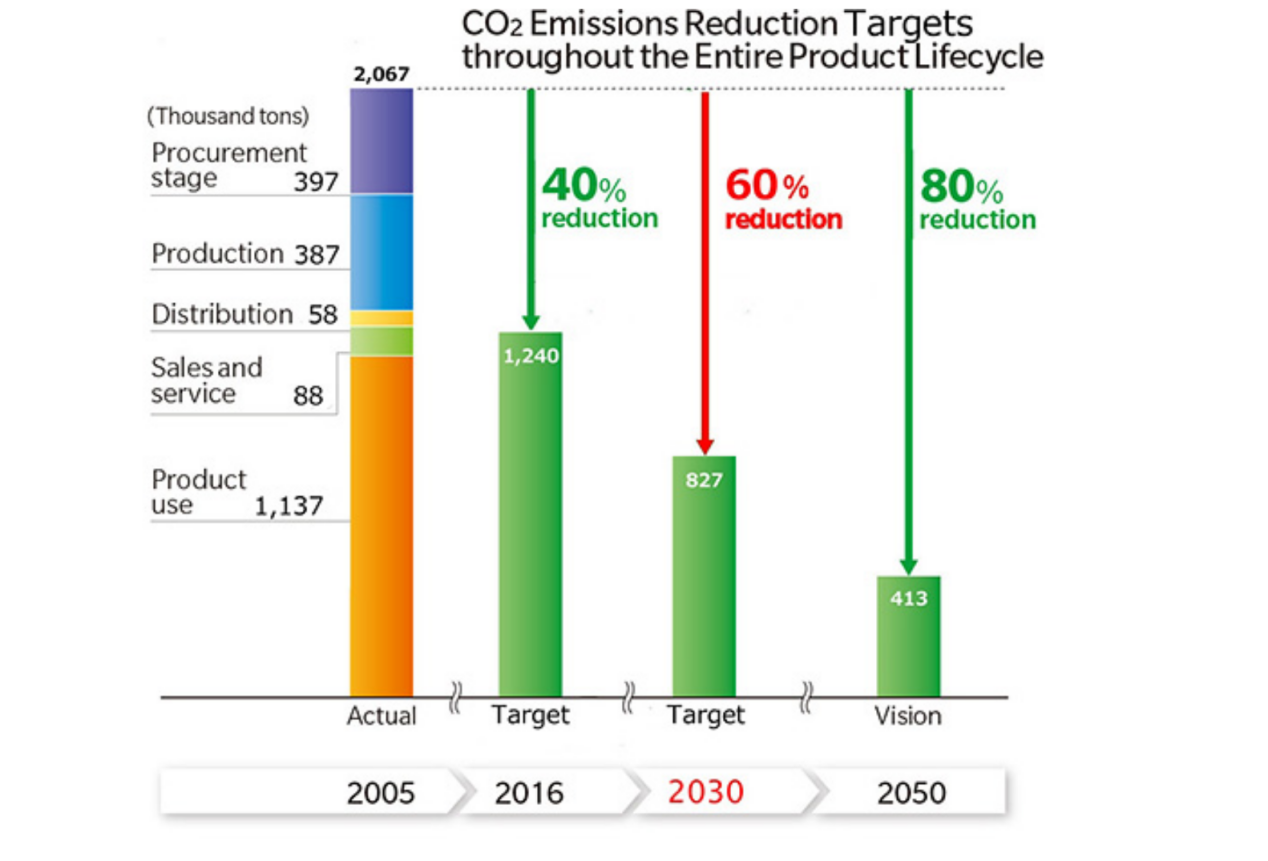
Carbon reduction targets are achieved by using less lubricating oil
Global carbon dioxide emissions need to be reduced by 45 per cent by 2030 from 2010 levels, and reach net-zero emissions by 2050.
According to the Intergovernmental Panel on Climate Change (IPCC), greenhouse gas emissions in 2004 were 49 billion t-CO2, which, divided by the world’s population of 6.4 billion people, amounts to 7.66 t-CO2 per person per year. The amount of greenhouse gases that the earth can absorb naturally is thought to be 11.4 billion t-CO2. Divided by the projected world population of 9.2 billion people in 2050, this means the earth could naturally absorb 1.24 t-CO2 per person in 2050. This is a reduction of approximately 80% from the 7.66 t-CO2 per person amount in 2004.
The CO2 emissions targets set in Eco Vision 2050 are based on an approach to reduce greenhouse gas emissions per person to a level that the earth can absorb naturally. The targets to be achieved by 2030 have been set using backcasting from Eco Vision 2050. A process is underway to establish the Medium-Term Environmental Plan 2019 using backcasting from the targets to be achieved by 2030.

Lubricating oil is also a carbon emission for the environment, through using less oil, we can reduce carbon emission, here are calculation accounting methods and reporting guidelines for greenhouse gas emissions of Chinese petrochemical enterprises.
Indirect calculation: add up the carbon emissions generated by the upstream link of lubricating oil production and the downstream link of lubricating oil treatment to obtain the carbon emissions corresponding to the saved lubricating oil.
Direct accounting: Lubricating oil carbon content, lubricating oil Unified as "other petroleum products", its low calorific value is 41.031GJ/t, the carbon content per unit calorific value is 20.00X102tC/GJ, and the fuel carbon oxidation rate is 98%. Referring to the petrochemical accounting guide, the accounting formula is as follows:
Carbon emission of lubricating oil (tCO₂) = low calorific value (GJ/t) x carbon content per unit calorific value (tC/GJ) x fuel carbon oxidation rate (%) x corresponding crude oil consumption of lubricating oil (t) x 44/ 12
The carbon emission of lubricating oil includes the carbon emission of production link and the carbon emission of treatment link, by using oil filtration equipment, we can reduce lubricating oil and reduce carbon emissions.
Every ton of lubricating oil consumed adds 88.5 tons of carbon dioxide, One petrochemical company saved about 280 tons of lubricating oil last year, according to the report
oil carbon emissions formula, per ton "lubricating oil" increase 88.5 a ton of CO2 saves 24,768 tons of carbon dioxide
Post time: Jun-14-2023

